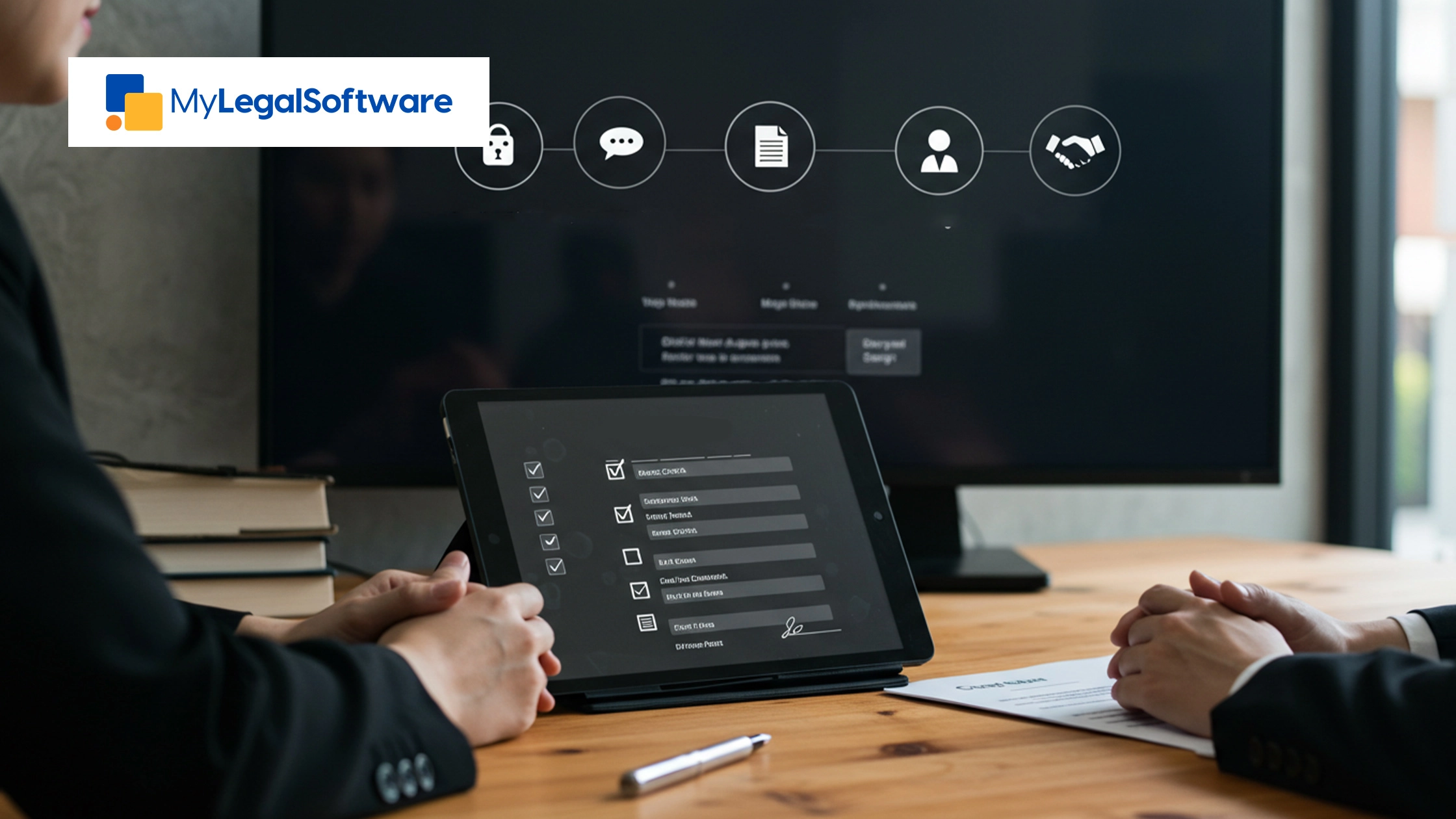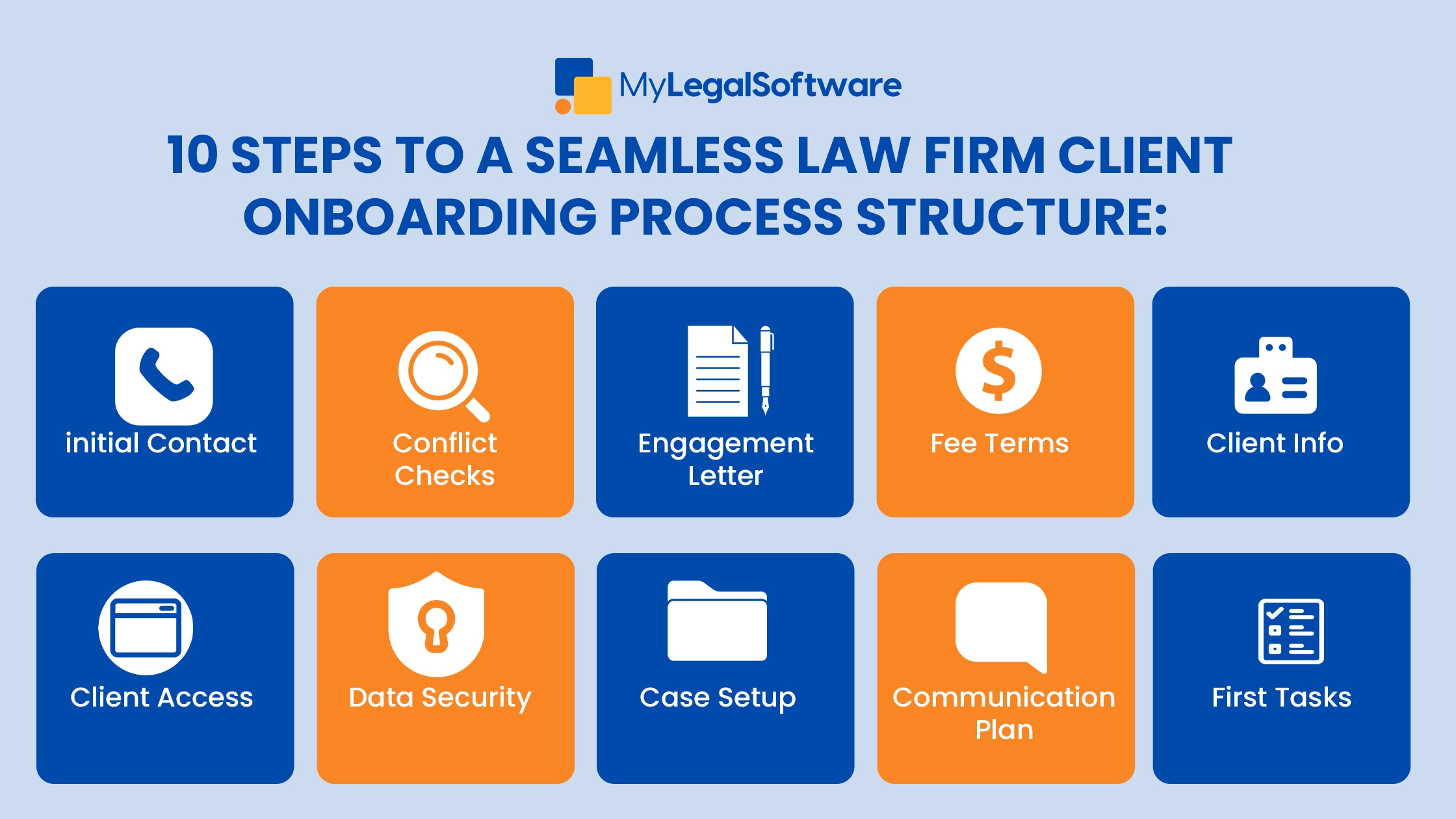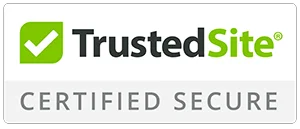A law firm client onboarding checklist is a systematic process that guides new clients through the initial stages of their legal engagement, ensuring all necessary documentation, agreements, and procedures are completed efficiently and professionally.
The process of onboarding a client is not just helpful documentation; it’s how you build confidence, clarity, and trust from the first interaction.
Before someone chooses your firm, they’re usually already overwhelmed. The onboarding process is your chance to replace that stress with structure. By walking clients through each necessary step, you’re not only protecting your practice, but you’re also showing that you value their time and situation.
In this guide, we’ll walk you through every part of an effective onboarding flow, from consultation to client portal access. You’ll also find tech tips and strategies to simplify the process and improve the experience.
Why the Right Onboarding Process Matters

First Impressions Set the Tone
When a client walks through your door (or logs into your portal), they’re looking for reassurance. A disorganized or slow start might make them second-guess their decision.
But when your team is responsive, your documents are ready, and the process is clear, they feel like they’re in capable hands. That early experience shapes how they talk about your firm to others.
Setting Clear Expectations
Every firm-client relationship benefits from a shared understanding of roles, responsibilities, and expectations. Laying everything out at the start, including timelines, communications, costs, and scope, keeps confusion to a minimum and protects both parties.
It Reduces Risk
Mistakes during onboarding can have consequences later. Forgetting to collect a necessary form, missing a key disclosure, or skipping a conflict check can lead to serious compliance issues. With a standardized checklist, you know every client receives the same level of thoroughness every time.
Stand Out from the Crowd
In today’s competitive legal world, every interaction matters. A well-structured onboarding process is one of the easiest ways to differentiate your firm from others. While others are still emailing PDFs and relying on memory, you’re giving your clients a seamless, organized experience that shows you’re invested in doing things right.
The Essential Law Firm Client Onboarding Checklist

1. Initial Contact & Lead Qualification
The onboarding process begins with listening. During that first conversation, gather enough detail to understand the client’s needs. Ask about the legal issues, time sensitivity, and budget concerns. You’re not just deciding whether to take the case; you’re making sure it’s a good match on both sides.
2. Conflict Checks & Ethical Screening
Before you get too far into the relationship, it’s essential to confirm there are no conflicts of interest. Use your firm’s systems, internal databases, or external tools to run a full check. If you’ve worked with related parties or on similar matters, it needs to be reviewed and documented. The sooner you do this, the better. Ethical compliance starts here.
3. Retainer Agreement & Engagement Letter
A good engagement letter sets expectations from the start. This document should outline the scope of your representation, the responsibilities of both lawyer and client, and the terms of your agreement. Include clauses around termination, limitations of service, and anything else relevant to the specific case.
4. Fee Structure & Payment Terms
Money conversations can sometimes be uncomfortable, but they’re necessary. Transparency here builds trust. Lay out your billing structure clearly: whether you charge hourly, offer flat fees, or use alternative arrangements. Walk the client through expected costs, billing timelines, payment methods, and how reimbursements for expenses will work.
5. Client Information Collection
Necessary client details include contact information, identification documents, and any relevant legal or financial records related to the matter. Having a secure system to store this information makes future collaboration easier for both the client and the team. It’s also helpful for setting up your case management platform.
6. Client Portal & Document Access Setup
Your client should know where to go to stay updated. Set up their portal access early, and make sure they know how to log in and navigate it. Through this portal, they should be able to upload documents, receive updates, and reach out to your team when needed. A secure, intuitive portal is one of the most effective tools for consistent communication.
7. Data Security Protocols & Consent Forms
Before you start exchanging sensitive information, make sure you have the client’s consent for digital communications, data storage, and any third-party tools your firm uses. This isn’t just about legal compliance; it’s about showing that you take their privacy seriously. Walk them through your firm’s data policies and provide the necessary forms to sign.
8. Case Management System Entry
Once the onboarding details are gathered, it’s time to set the case up internally. Input everything into your case management system: contact details, matter description, relevant deadlines, and the team members assigned to the case.
Establish folder structures and permissions so that the right people have access. A centralized setup ensures smoother collaboration as the case progresses.
9. Introduction to Billing and Communication Plan
Set expectations now for how and when the client will hear from you. Let them know how billing works, when invoices go out, how time is tracked, and where they can review charges.
Then, talk about communication preferences: Do they prefer email or phone? Weekly updates or only when something changes? Some case management software have secure integrated chat and call systems.
10. First-Task Planning & Follow-Up Schedule
Finally, don’t let the client leave wondering what happens next. Identify the first few tasks that need to happen and explain who will be responsible for each one. Map out a timeline for early actions, filings, research, and correspondence, and schedule a follow-up to review progress. Even if the legal matter will take time, showing momentum early gives clients peace of mind.
Tools & Technology That Support Onboarding Clients
Law firms that embrace the right technology can make onboarding faster, more consistent, and more professional. Whether you’re managing five cases or five hundred, here are the platforms and systems that streamline the process:
- Client intake & CRM systems – Keep track of leads, consultations, and follow-ups
- E-signature platforms – Speed up engagement agreements and consent form collection
- Secure client portals – Provide a centralized hub for messages and document sharing
- Automated billing tools – Make it easy to generate invoices and process payments
- Calendar & task management software – Stay ahead of deadlines and client follow-ups
- Compliance and audit tools – Keep a paper trail for every decision and communication
When integrated properly, these tools reduce the manual effort needed to onboard new clients while also improving their overall experience. Clients appreciate transparency and convenience, and automation makes it easier for your team to deliver both.
Avoiding Common Onboarding Mistakes
Delays in Paperwork or Portal Access
When a client doesn’t receive documents or portal credentials for days, it sends the wrong message. Aim to provide essential onboarding materials, like engagement letters and login info, within 24 hours of the initial commitment.
Overlooking Conflict Checks
Ethical issues can arise quickly if your conflict screening is rushed or incomplete. Make conflict checks part of your intake protocol, not something you do after starting substantive conversations.
Miscommunication About Billing and Timelines
Clients get frustrated when they don’t know what to expect. If your billing model or process timelines are unclear, questions and disputes are likely to follow. Be as specific as possible from the start and keep clients updated as things evolve.
Insecure Communication Practices
Sending sensitive documents through unsecured email or public file links puts your firm at risk. Establish encrypted channels, clarify acceptable communication methods with clients, and stick to those standards.
Final Thoughts
A great law firm client onboarding checklist is a reflection of your firm’s professionalism, organization, and care for your clients. It helps you make a strong first impression, sets the tone for the entire relationship, and ensures your team stays compliant and efficient.
When done consistently, onboarding becomes a quiet but powerful differentiator. Clients notice when things run smoothly. They feel more at ease, more informed, and more likely to refer your services to others.
By combining human attention with the right tech tools, you can turn onboarding from a tedious administrative task into a meaningful first step in your client’s journey. Systems like MyLegalSoftware allow you to automate and streamline these processes so that every client receives a consistent, quality experience.
Frequently Asked Questions
-
What should be included in a law firm client onboarding checklist?
-
How long should onboarding take?
-
Does onboarding impact client satisfaction?
-
What tools are essential for onboarding?
-
How do I stay compliant during onboarding?
Conflict of interest checks, retainer agreements, fee disclosures, client data collection, portal setup, consent forms, internal case setup, communication planning, and first-task scheduling.
Ideally, the entire onboarding process should be completed within 24–48 hours. Complex matters may need more time for due diligence.
Absolutely. A structured, transparent process reassures clients, improves communication, and fosters long-term trust.
Look for CRM systems, e-signature software, client portals, case management platforms, billing automation, and compliance trackers.
Document every step, update your conflict check system regularly, get proper consent, and use secure communication channels.








